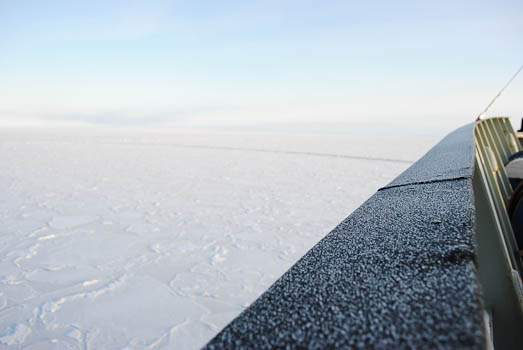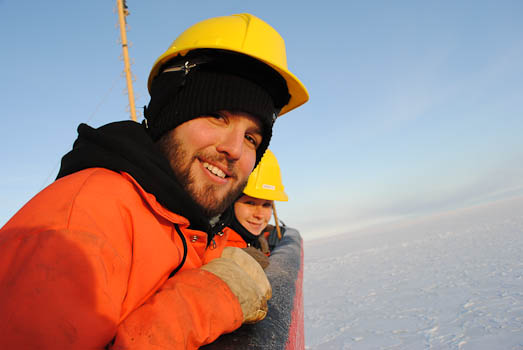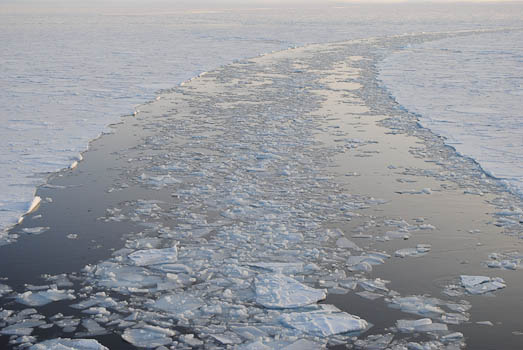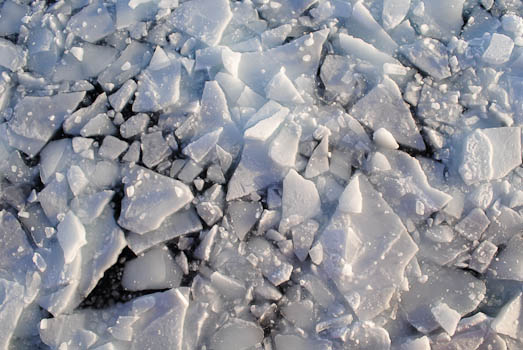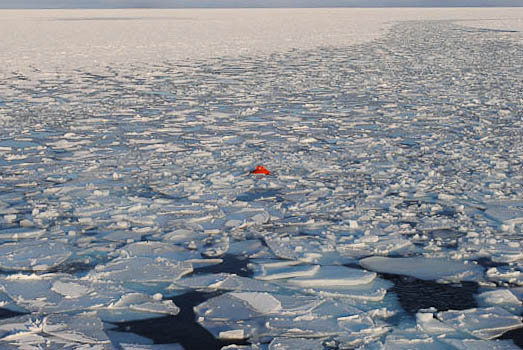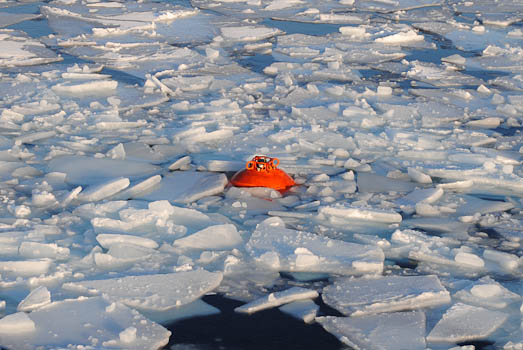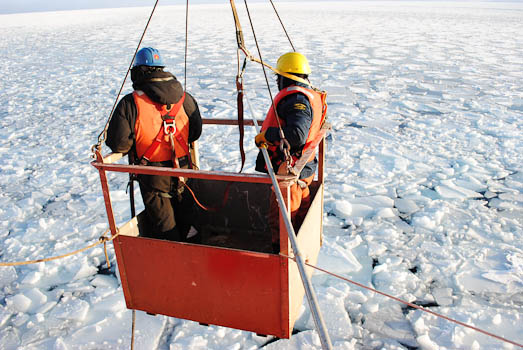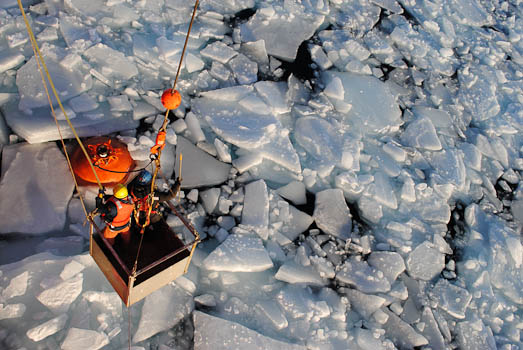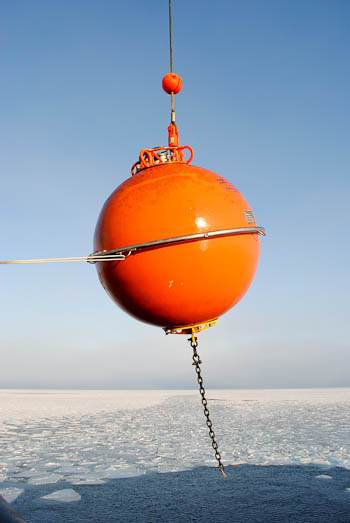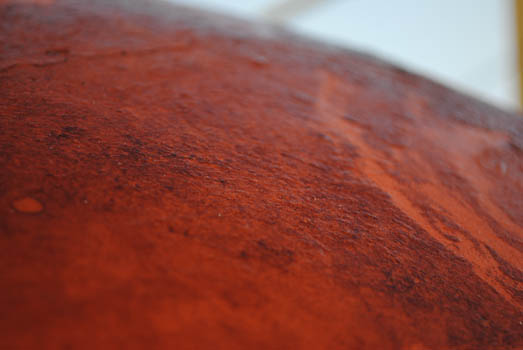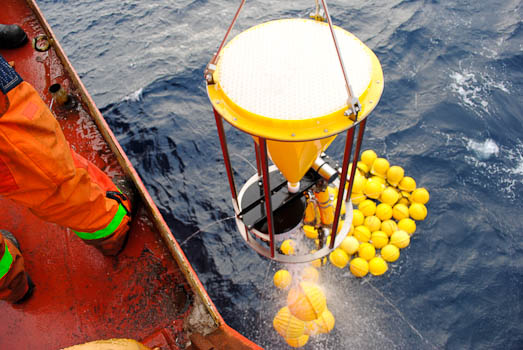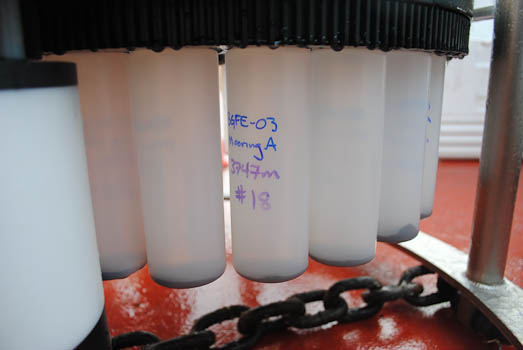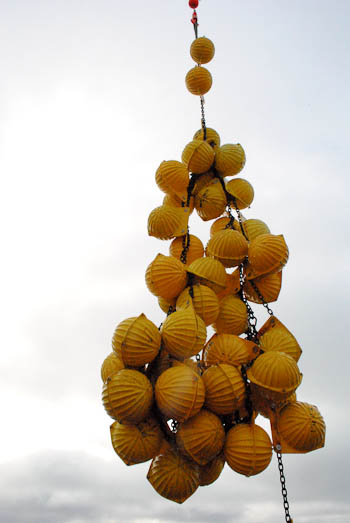Alex KainOctober 1, 2009Moorings fasten to anchors at the bottom of the sea. They are held taut by a large buoy, suspended from the bottom roughly 50 meters (164 feet) from the ocean's surface. At depths along the vertical line, instruments monitor the conditions of the sea. Over the past three days, WHOI technicians and CCGS Louis S. St.-Laurent crew have completed two mooring recoveries and one deployment. Each recovery and deployment requires several hours of carefully planned labor in the frigid cold. Though conceptually simple, subzero temperatures, winds, and heavy ice cover present mooring recoveries with numerous challenges. All moorings, however, follow a similar course to get from the bottom of the Beaufort Sea to the deck of the Louis. Step 1: Find the general location of the mooring
Step 2: Mow the lawn The ship first "mows the lawn" by triangulating the mooring site. Based on radar images, the ship plows through the ice to enclose the site in a triangle shape. Then, once distances are calculated to the mooring from the vertices of the triangle, the ship can accurately break up ice throughout the site, allowing for an efficient recovery that reduces the risk of the mooring's getting stuck under a floe.
Step 3: Detachment If all goes as planned, the huge top float will be visible on the surface of the water, or among small ice chunks that can be pushed aside with compressed air that spews from the side of the ship.
Step 4: Link the float This isn't as easy as it sounds. Like all other recoveries, this process resembles one of those stuffed animal crane games you find in the entryways of supermarkets. Technicians must insert a two inch-wide hook into a metal loop at the top of the buoy, a linkage that requires a platform to be lowered from the deck of the ship to the surface of the water.
Step 5: Start reeling
Step 6: Collect samples
Step 7: Figure out how to deal with an infestation of yellow balls
And lastly, by far the most important step in a mooring recovery. Step 8: Enjoy a well-earned cup of coffee, relax, and warm up All text and photos property of Alex Kain. Last updated: October 7, 2019 | |||||||||||||||||||||||||||||||||||||||||||||||||
Copyright ©2007 Woods Hole Oceanographic Institution, All Rights Reserved, Privacy Policy. | |||||||||||||||||||||||||||||||||||||||||||||||||


